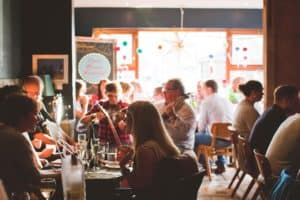Leprechauns and Little People: Unveiling the Mysteries of Folkloric Beings
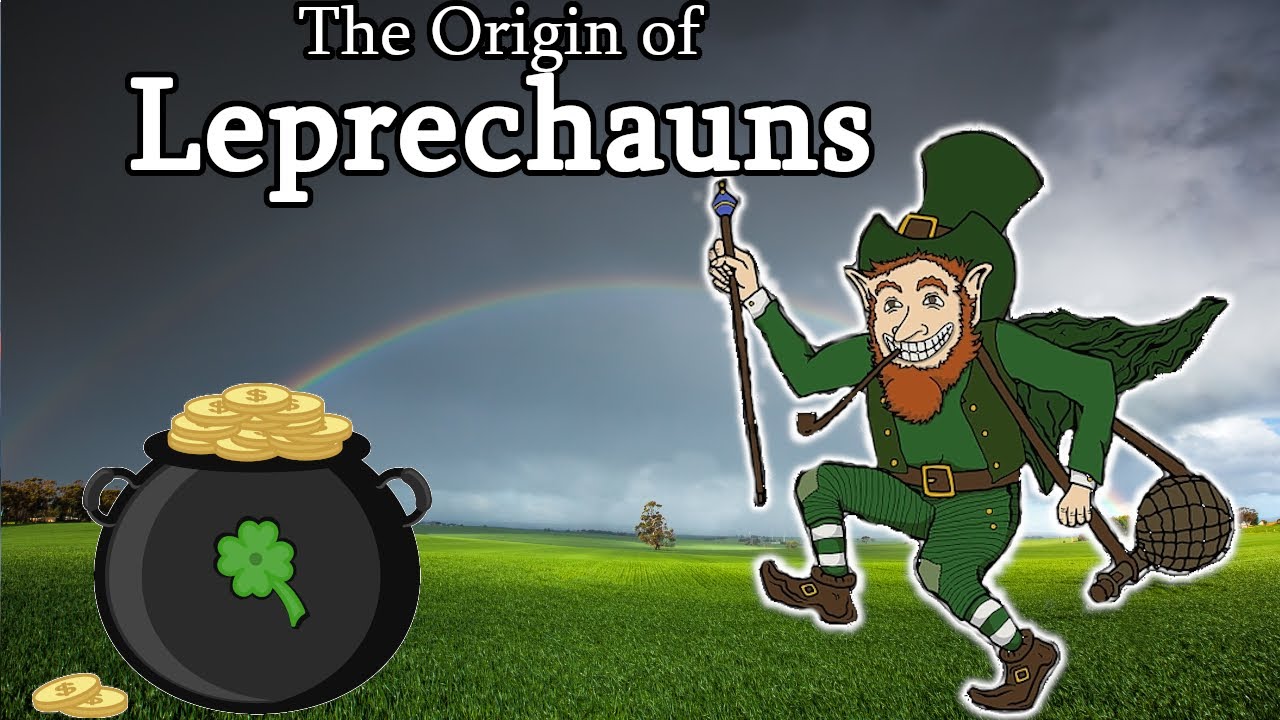
Updated On: April 21, 2024 by Eman Sameh
Leprechauns have long been a central figure in Irish folklore, capturing the imaginations of people around the world with their mischievous antics and elusive nature. Typically depicted as diminutive, bearded men clad in green, they have created a rich tapestry of mythology that contributes to the cultural significance of the Emerald Isle. In exploring the origins and various depictions of leprechauns, as well as their counterparts in other cultures, we begin to understand the parallels and variations in the global landscape of little people myths.
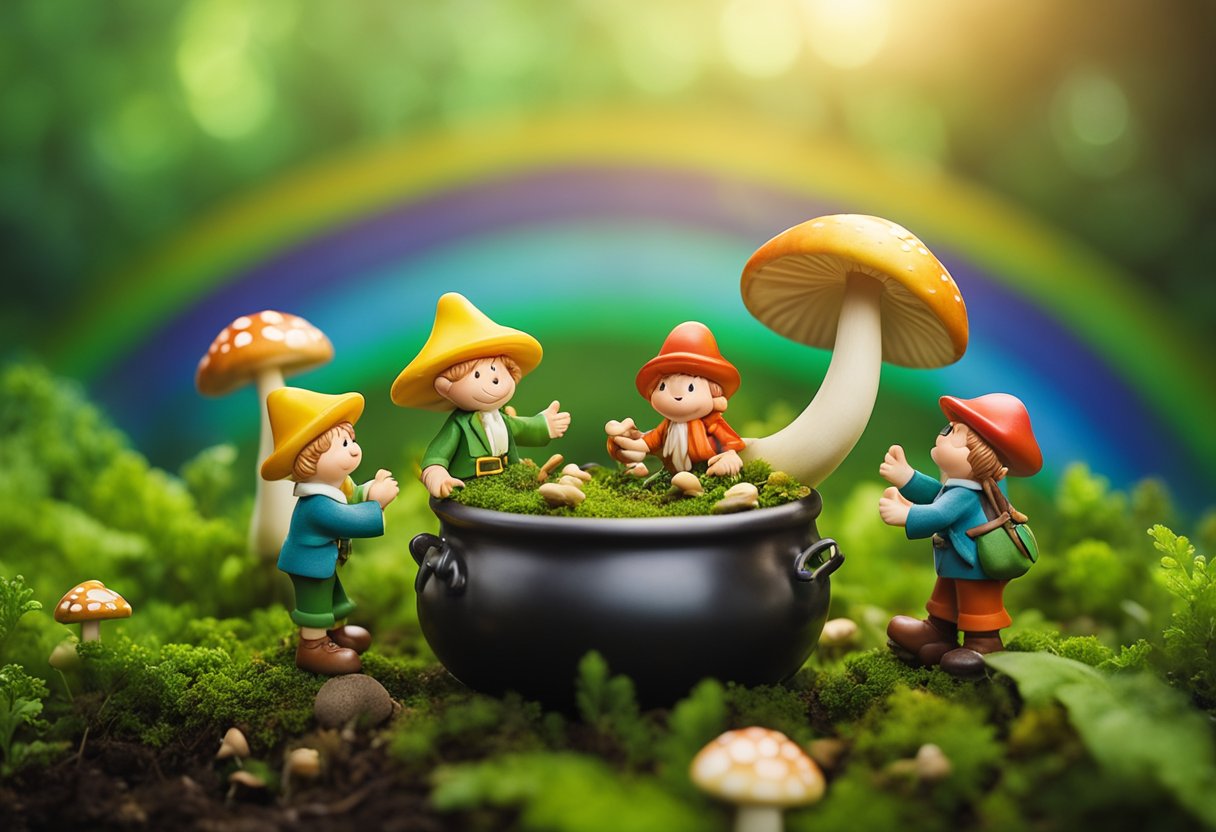
Our comparative study delves into the attributes and mythology of leprechauns within the context of Irish folklore and extends beyond to investigate similar beings in folklore worldwide. By examining their crafts and livelihoods, as well as their behavioural traits, we start to unravel the broader significance of these creatures. Our analysis not only considers their place in storytelling and art but also addresses how such legends have influenced tourism and modern culture. We look into the leprechauns’ purported habitats and respond to some of the most frequently asked questions about these enigmatic entities.
Origins and Evolution in Folklore
In our exploration of mythical creatures, we recognise that folklore is a living tapestry, richly woven with the threads of history and imagination. Specifically, the origins and transformations of leprechauns within this narrative offer insights into the very fabric of Irish and Celtic mythology.
Old Irish Roots and the Tuatha Dé Danann
Tracing the origins of leprechauns leads us to the Old Irish folklore and the mythological Tuatha Dé Danann, often considered a race of divine beings in ancient texts. Renowned for their powerful magic and skilful craftsmanship, these entities are deeply rooted in pre-Christian Irish mythology and are thought to represent the pantheon of early Irish gods. Their legend speaks of a mystical people adept at arts and warfare, who eventually retreated from the world of humans, submerging into the realm of the unseen, where some believe they morphed into the fairies and ‘little people’ of later folklore.
Leprechauns in Medieval Literature
As our narrative unfolds into the medieval era, depictions of leprechauns evolve within Celtic mythology. Shifting from the divine stature of the Tuatha Dé Danann, leprechauns are captured in medieval literature as diminutive figures. They are often portrayed as solitary cobblers, their presence betrayed only by the tap-tap sound of their hammering. It’s in these texts we see the leprechaun’s role crystallise as guardians of hidden treasure, with stories fuelling the search for the elusive pots of gold and encapsulating their renowned trickery and elusiveness.
Physical Characteristics and Depictions
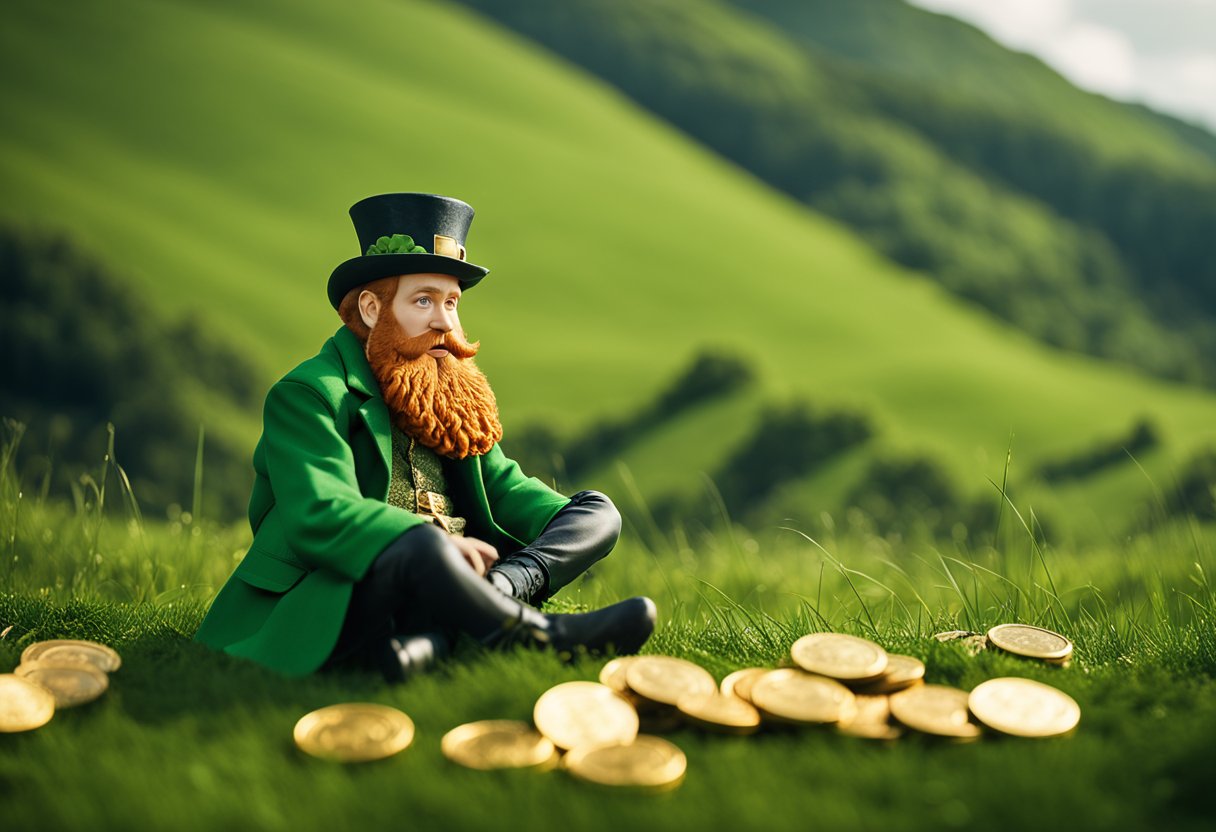
Leprechauns are iconic figures within Irish folklore, and their portrayal has changed significantly from classical representations to modern-day popular culture. We’ll explore how these beings are depicted in terms of their physicality and attire to understand how these portrayals have evolved over time.
Classical Depictions in Folklore
Traditionally, leprechauns are described as small-bodied creatures, often portrayed with a red beard and dressed in a green coat. Their apparel usually includes a cocked hat, indicative of their mischievous nature, and a leather apron, a nod to their reputed profession as cobblers. Leprechauns were originally considered to be part of the fairy family, embodying the attributes of elderly men despite their diminutive stature. In folklore, they were known to be elusive, often outwitting humans with their cunning trickery.
Modern Representations and Pop Culture
As times have progressed, the image of the leprechaun has undergone significant transformation, particularly in pop culture. The once nuanced likenesses have given way to more homogenised versions, largely influenced by media portrayals. Modern leprechauns usually sport exaggerated versions of their classical outfits, with bolder, brighter greens and a more caricatured appearance, reinforcing stereotypes. Interestingly, while leprechauns were traditionally male, modern interpretations sometimes blur gender lines, reflecting broader societal changes. This can be seen in various mediums, including films, animated cartoons, and advertising, which tend to favour these contemporary, stylized depictions.
Cultural Significance and Mythology
In our exploration of folklore, we uncover the profound impact that mythical beings have on national identities and cultural practices. Such entities are often steeped in history and become emblematic of a region’s culture and traditions.
Symbolism in Irish Culture
Leprechauns have transcended their mythological roots to become a symbol of Irish culture. Frequently associated with St. Patrick’s Day celebrations, these legendary creatures encapsulate the whimsy and enchantment of Ireland’s folklore. Evoking imagery of the emerald isle, leprechauns are often depicted playing the Irish harp, linking them to a traditional emblem of Ireland’s storied past.
Leprechauns and Irish Mythology
Irish mythology is rich with tales of leprechauns, portraying them as mischievous fairies known for their solitary lifestyle and their role as cobblers. These little people are famously connected to a pot of gold hidden at the end of a rainbow, a narrative which has captured the imagination of many around the world. The mythology surrounding leprechauns reflects broader themes in folklore that emphasise the mystery of nature and the allure of the unknown.
Leprechaun Crafts and Livelihood
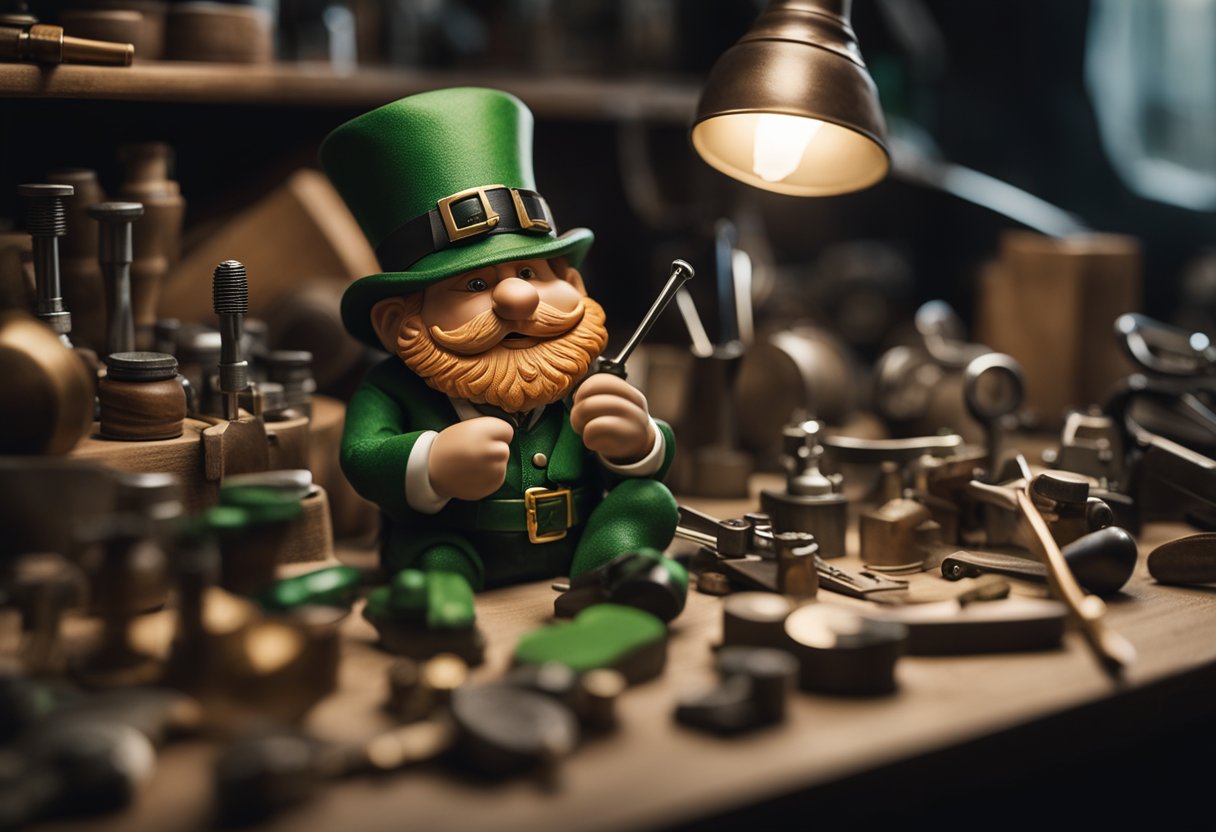
Leprechauns are renowned for their expertise in shoemaking and their association with wealth, particularly gold. We explore these two defining aspects of their legend.
The Shoemaking Tradition
In the lore of Irish culture, leprechauns are often described as cobblers or shoemakers. This detailed craft is considered their primary occupation. Skilled shoemakers have always played a pivotal role in communities, mending and creating durable footwear, and leprechauns are no exception. The link between leprechauns and their shoemaking symbolises a time when trades such as cobbling were highly valued for their contribution to daily life.
Gold and Wealth in Legend
Legend tells us that leprechauns are also closely associated with gold and wealth. It’s said that they possess a pot of gold that is hidden and can only be found at the end of a rainbow. This idea of leprechauns hoarding gold connects to notions of fortune and the elusive nature of prosperity, reflecting the pursuit of wealth that is as tricky to secure as catching a leprechaun itself.
Behavioural Traits and Personality
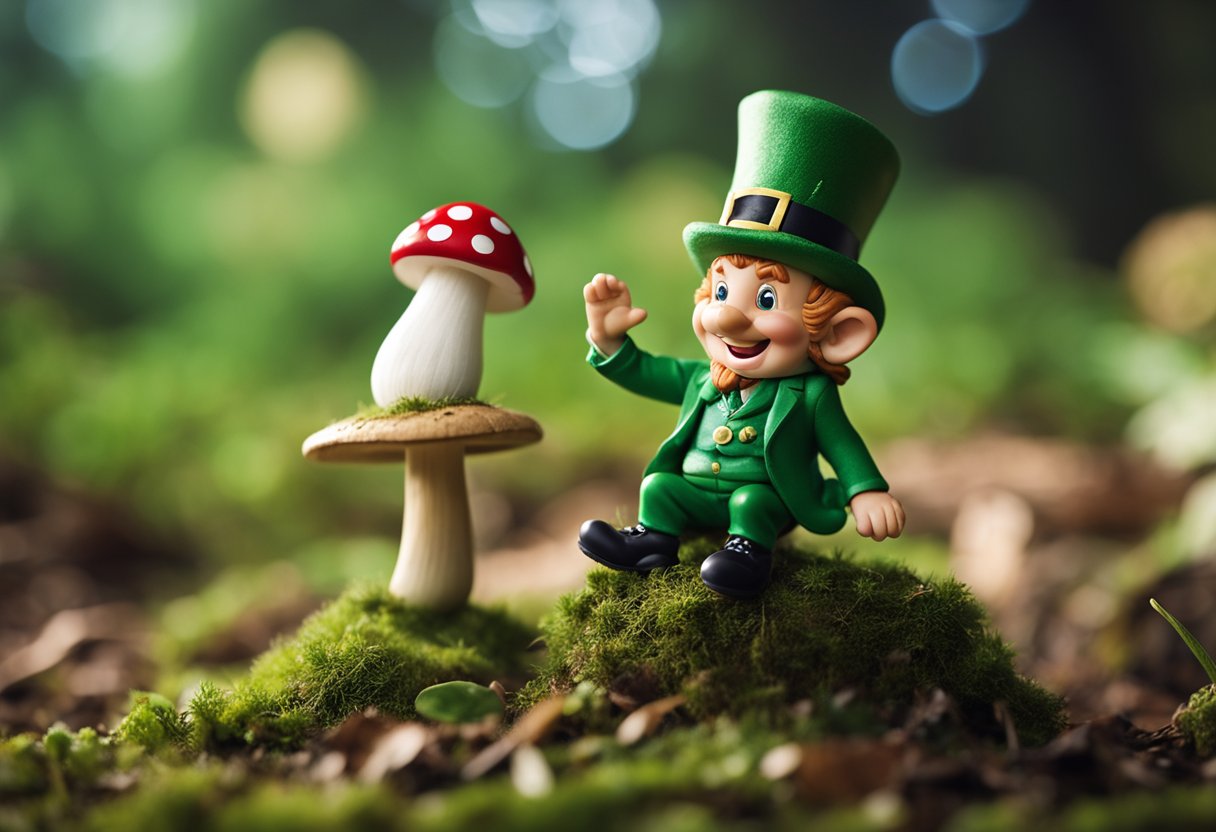
In exploring the personalities of magical beings in folklore, we find a common thread in their penchant for mischief and trickery. Their actions often challenge our expectations, offering both lessons and entertainment.
Mischievous Nature
Leprechauns, emblematic of Irish folklore, are renowned for their mischievous antics. While often portrayed engaging in harmless practical jokes, they’ve also been known to cunningly protect their treasures. A leprechaun’s mischievous nature can lead both to mirth and frustrations for those they encounter.
Trickster Elements in Folklore
Within folklore, the trickster is a recurring character, bridging the gap between the wise and the foolish. This archetype, found across cultures, frequently employs deception to achieve their goals. They’re not limited to causing mischief; rather, they often play significant roles in the creation myths and cultural narratives of their respective traditions. In the tales of leprechauns, for instance, we observe a being that embodies the trickster by being surprisingly difficult to outsmart and frequently tricking those who seek to capture them.
Comparative Mythology
In this section, we examine the various depictions of ‘little people‘ across different cultures and the parallels between European myths and their counterparts in other traditions.
Little People Across Different Cultures
The concept of little people is a recurring theme found globally. In Irish folklore, for example, the Leprechaun is a type of fairy known for his solitary nature and association with cobbling. In contrast, the Clurichaun is considered to be a relative of the Leprechaun but differs in that he is often found guarding wine cellars. Across the Irish Sea, Goblins in English folklore are similarly small statures but, unlike their Irish cousins, are often maligned as malevolent towards humans.
Venturing into Scandinavia, stories of water sprites—such as the nokken in Norwegian lore—depict them as beautiful and perilous, luring people to watery graves. Although the traits vary, these entities all share an otherworldly diminutive form, and their stories serve similar cautionary or explanatory roles in their cultures’ traditional narratives.
European Myths and Their Parallels
European mythology offers a rich tapestry of creatures, including Far Darrig in Ireland, who are known for their red coats and mischievous deeds. These creatures have analogues in other European traditions, such as the German Kobolds, who can be both helpful household spirits and troublesome mine inhabitants.
Drawing a comparative line, we discern a pattern of these entities playing roles that reflect human foibles and societal norms. Whether it’s the elusive Leprechaun or the more ominous Goblin, these beings embody aspects of European communities from times gone by, encapsulating fears, morals, and the unexplained through captivating tales.
Our exploration of these myths highlights their diversity and the underlying threads that connect folklore across continents.
Leprechaun Encounters in Folklore
In exploring the rich tapestry of Irish folklore, we find that leprechauns play a cunning role in numerous encounters with humans. These stories often emphasise the elusive nature of leprechauns and explore the intricate rules governing their interaction with our world.
Catching and Capturing Leprechauns
We know through folklore that catching a leprechaun is a desired yet challenging feat. Captors lure these sprightly beings with the promise of gold. However, securing a leprechaun is a complex undertaking, demanding keen wits and sharp eyes. Leprechauns, often characterised by their solitary nature, possess cunning and guile in spades. They’re said to lead those who catch them on merry chases, using tricks to escape or distract their captor.
For example, if one manages to snatch a leprechaun, tradition tells us that he might offer a pot of gold for his release. Yet this comes with the risk of deception, as leprechauns are master tricksters. Here, the wit of the captor is tested as they must navigate the leprechaun’s guile to secure the promised treasure.
Wishes and Their Consequences
Encounters with leprechauns can sometimes involve granting wishes. One element of lore states that a leprechaun may grant the captor three wishes in exchange for freedom. However, we caution that such wishes require careful consideration. Folk tales are replete with warnings about the unintended consequences of hastily made wishes.
Wishes and Their Consequences also tend to highlight a moral lesson. For instance, opting for quick riches or making selfish choices often leads to downfall or disappointment. Thus, while the notion of wishes can seem appealing, the folk stories tell us that they may also serve as a test of character for the wisher. The outcomes depend on both the nature of the wishes and the sagacity of the person making them.
Folk Art and Storytelling
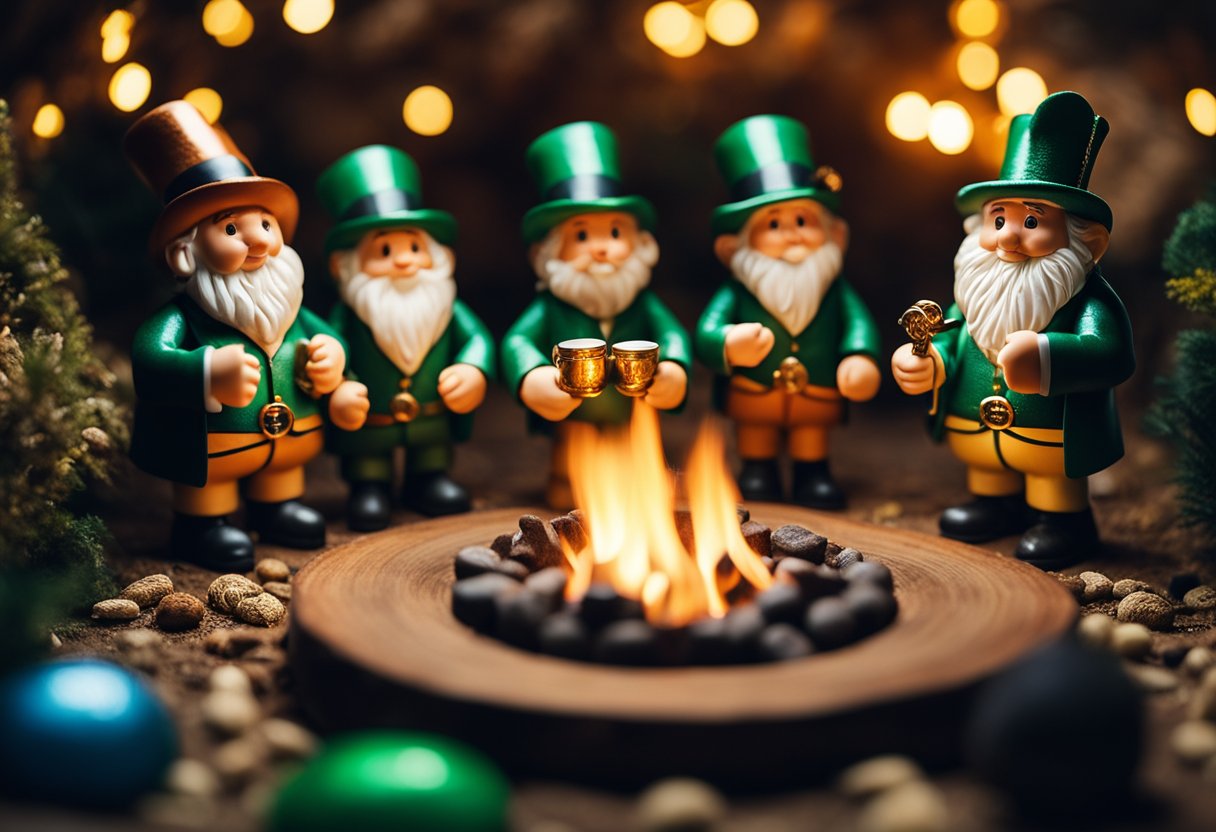
In folklore, folk art and storytelling serve as the primary conduits through which cultural heritage is preserved and communicated. These practices embody a community’s traditions, embodying their collective identity through expressive means and connecting us to a shared history.
Music and Dance
Throughout Ireland, music and dance have long been integral to our cultural expression. Traditional Irish folk music, often accompanied by spirited dancing, creates an auditory and physical narrative that brings to life the tales and myths of our past. Our history boasts notable figures like William Allingham, whose poems often come to life through song, creating a melodious bridge between the page and the people. The dance, perhaps best exemplified by the light-footed prowess of Fred Astaire, can evoke stories without uttering a single word, each step and turn a chapter in itself.
Literature and Film
The written word and film have had a profound impact on the dissemination of leprechaun lore. T. Crofton Croker was pivotal in popularising leprechaun stories, with detailed prose that led readers into the heart of Irish folk traditions. Meanwhile, cinematic works like Darby O’Gill and the Little People have visually captured the imagination, bringing the tales of cunning leprechauns to audiences far wider than ever before. These narratives, whether bound in a book or projected on a screen, have shaped international perceptions of our mythology and solidified its place in global folklore.
Impact on Tourism and Modern Culture
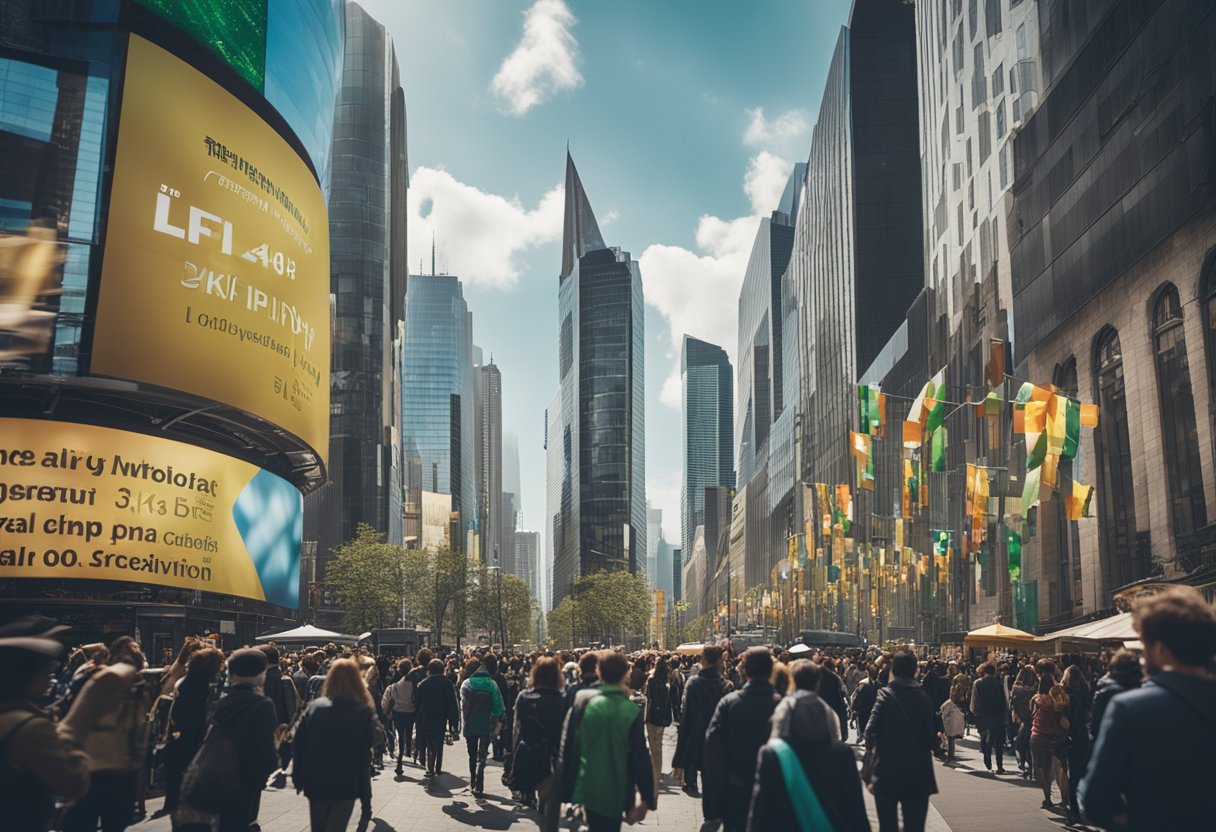
Leprechauns and the rich tapestry of Irish folklore continue to influence tourism in Ireland, strongly influencing the nation’s cultural exports and visitor experiences.
Festivals and Events
We see a surge in tourism during cultural showcases, such as the annual St. Patrick’s Day celebrations, where the image of the leprechaun plays a central role in parades and festivities. These events draw visitors from around the globe, keen to experience the supernatural charm of Ireland’s mythic creatures. The town of Killorglin in County Kerry hosts the Puck Fair, one of Ireland’s oldest festivals, which garners significant international attention and celebrates a possibly pre-Christian tradition.
Ireland’s Image Abroad
The portrayal of leprechauns has become intertwined with Ireland’s image abroad, fostering a sense of allure and enchantment around Irish culture. This fascination boosts tourism as people travel in search of the quintessential Irish folklore experience. Our contribution to promoting Ireland through platforms like Connolly Cove further strengthens Ireland’s global reputation as a land rich in folklore and tradition, with leprechauns symbolising the magical aspect of the Emerald Isle.
Realms and Habitations
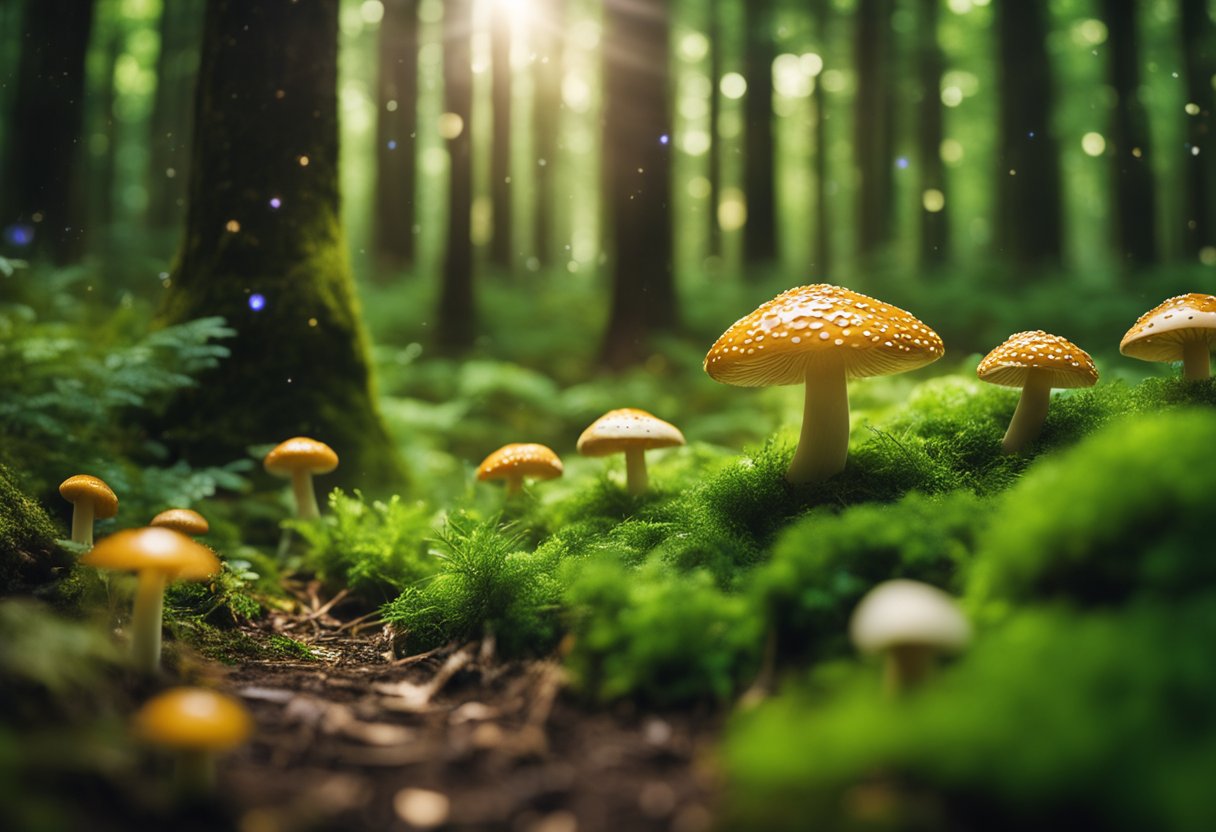
In our comparative study of folklore, the realms and habitations of beings such as leprechauns and other little people emerge as vivid and integral aspects of these tales. The connection with nature and the specific locales they inhabit define their roles within the folklore.
Association with Nature
Leprechauns, quintessential figures in Irish folklore, are often associated with natural environs, linked specifically to the trees and rural landscapes. This connection highlights their intimate relationship with elements of nature, underscoring their role as guardians or personifications of the natural world. In our exploration, we find that similar fairy folk across cultures hold this deep association with the unspoilt aspects of nature, often acting as custodians of wildlife and plant life.
Mythical Abodes and Fairy Forts
The mythical dwellings of leprechauns and little people vary from underground shelters, known in Irish as sidh, to fairy forts. These fairy forts are old earthen structures believed to house magical beings and offer them protection. Venturing into underwater realms, some folklore suggests that certain fairies reside beneath the waves, claiming areas typically unreachable by humans as their own. The concept of these unique abodes is widespread, encapsulating the wonder of invisible or hard-to-find homes that reflect the elusive nature of their inhabitants.
Frequently Asked Questions
We’ve compiled some of the most commonly asked questions to deepen your understanding of the mythical leprechauns and their place in Irish folklore.
What characteristics distinguish leprechauns from other ‘little people’ in Irish folklore?
Leprechauns are known for their solitary nature, often depicted as cobblers with a penchant for practical jokes. Unlike other Irish fairies, they are typically male, dressed in green, and guard a pot of gold. Their attributes set them apart from fairies like the mischievous pookas or the ethereal banshees.
How do leprechaun legends vary across different regions in Ireland?
Regional differences in leprechaun legends are quite remarkable. For example, in some parts of Leinster, leprechauns are said to wear red instead of green. The stories surrounding their cunning and the locations of their hidden treasures also vary, reflecting the diverse landscape and culture of Ireland.
Can the origins of leprechaun stories be traced to the Tuatha Dé Danann?
The origins of leprechaun stories are sometimes linked to the Tuatha Dé Danann, a supernatural race in Irish mythology. Some believe that leprechauns may have descended from this magical group, taking on smaller, more diminished forms over the centuries.
In what ways do leprechaun narratives intersect with wider Celtic folklore?
Leprechaun narratives intersect with wider Celtic folklore through their shared elements of enchantment and otherworldliness. they are part of a greater tapestry of stories that explore themes of hidden realms, magical treasures, and the elusive nature of the sidhe, the fairy folk of the Celtic tradition.
What role do leprechauns play in the cultural heritage and traditions of Ireland?
Leprechauns play a significant role in the cultural heritage and traditions of Ireland, embodying a sense of whimsy and mystery. They are celebrated during festivals such as St. Patrick’s Day and are a symbol of the rich storytelling tradition that has been passed down through generations.
How have portrayals of leprechauns in popular culture diverged from their folkloric roots?
Popular culture’s depictions of leprechauns often diverge from their folkloric roots, sometimes painting them as caricatures or mascots. While these portrayals often emphasize their connection to luck and wealth, they can overlook the deeper, more nuanced aspects of leprechaun lore, like their trickster nature and place within the Irish fairy hierarchy.





